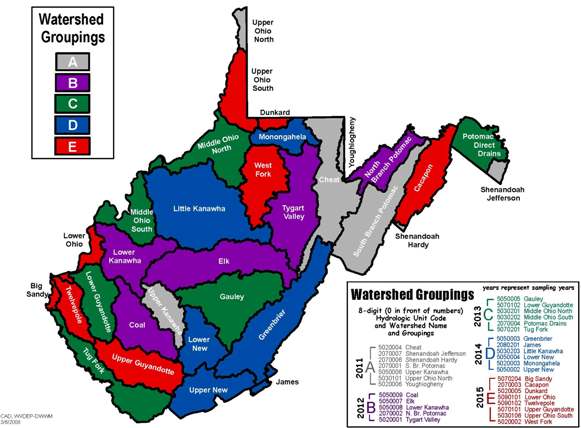
Initially upon learning about the mismanagement of the Kanawha River and its surrounding watersheds, I assumed the appropriate strategy would have been to implement some sort of ecosystem-based approach to management. It wasn’t until I did some more thorough research that I realized West Virginia has already implemented a form of EBM, although quite a dysfunctional one. Through careful examination of the WV Department of Environmental Protection’s Watershed Management Policies, I’ve learned that West Virginia’s policies are much more place-based than I had expected.
The WVDEP manages its water sources by watershed. It has divided the Kanawha river into two larger watersheds, the Upper Kanawha and the Lower Kanawha, and then again into sub-watersheds. Its Watershed Management program is divided into five major steps:
- Water Quality Monitoring
- Developing Water Quality Standards
- Listing Impaired Streams
- TMDL Reports
- Nonpoint Source Pollution Program
The Watershed Assessment Branch is responsible for monitoring and assessing water quality. For larger rivers like the Kanawha, it uses Ambient sampling methods, which occur bi-monthly. There are 9 AWQ sites along the Kanawha River. Most are located at the mouths of confluences with other large rivers, but some are located downstream of the Chemical Valley in order to detect and isolate sources of pollution.
Once each river and creek in the watershed have been tested, the DEP comes up with a list of impaired streams. The streams reported on this list are those that do not measure up to the state’s water quality standards. They then run 4-year long TMDL reports on each impaired stream. TMDL, or Total Maximum Daily Load reports are plans of action for getting the stream or river to meet water quality standards again. Unlike my initial assumption, the ecosystem-based research and monitoring is there. The problem, it seems, is an implementation, oversight, and enforcement issue.
